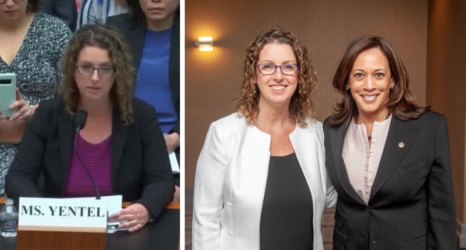The following is a reprint from the latest issue of Ms. To get the entire magazine in your mailbox or inbox, subscribe now!
When you think of survival items a homeless person may need, menstrual- hygiene products probably don’t immediately come to mind. The reality is that pads, tampons and liners often aren’t readily available to women living in shelters or on the streets. So a period, which might be an inconvenience for the average woman, can become a source of shame and helplessness if you’re homeless.
“The inability to hygienically care for oneself has innumerable negative psychological and physical ramifications,” says Shea Post, executive director of the Athens Area Homeless Shelter in Georgia, which is working with college students to distribute feminine-care kits.
“This is particularly true of teenage girls experiencing homelessness. Puberty and one’s first menstruation are traumatic even for girls in stable, comfortable situations,” Post adds.
According to the National Institutes of Health, women and families are the fastest-growing segment of the homeless population. When forced to go without tampons and pads, some women and girls resort to rolling up toilet paper from public restrooms or using wadded rags. To make matters worse, homeless women often lack access to facilities where they can change menstrual products regularly, meaning each period comes with a risk of infection.
There’s good news: In recent years, more groups providing menstrual products to homeless women and girls have sprung up. One such group, Distributing Dignity, a Camden, New Jersey, nonprofit founded in 2010 by Joanie Balderstone and Rebecca McIntire, has since expanded into New York and Pennsylvania with plans to go national.
“Every [woman] has the one story about when they were unprepared,” Balderstone tells Ms. For homeless women, “It’s not about not expecting it…they know it’s coming but they don’t have the resources to get sup- plies for themselves.”
The organization got its start hosting “Mardi Bra” parties where volunteers collected bras, pads and tampons for local shelters. Last year, they distributed products to more than 500 women, and as of June they’ve already surpassed that number. They expect to help 2,300 women by December.
In Los Angeles, a chapter of Girls Learn International (a program of the Feminist Majority Foundation) at the Wildwood School also recognized the special challenges faced by homeless women, organizing a feminine-products drive and donating the items to the Downtown Women’s Center.
“Homeless people are some of the most invisible people to our society. …The female homeless population is enormous and almost completely neglected,” says high school senior Francesco Wengrod, who helped start the feminine-hygiene project. The most rewarding thing about the experience, he says, was “helping people in a tangible way.”
Even for homeless women who might earn some money, tampons and pads are frequently classified as nonessential luxury items. That means they’re not covered by government- assistance programs like SNAP and are taxed in 40 states—putting them completely out of reach for women with limited funds. Despite the fact that menstruation is an unavoidable, biological reality for half the population— and the United Nations says the ability to exercise menstrual hygiene is a human right—these products aren’t seen for what they are: a necessity.
The daily lives of homeless women and girls are fraught with enough uncertainties. The question of what to do when the next period comes around shouldn’t be one of them.
Photo courtesy of Lady Fresh via Creative Commons 2.0.





